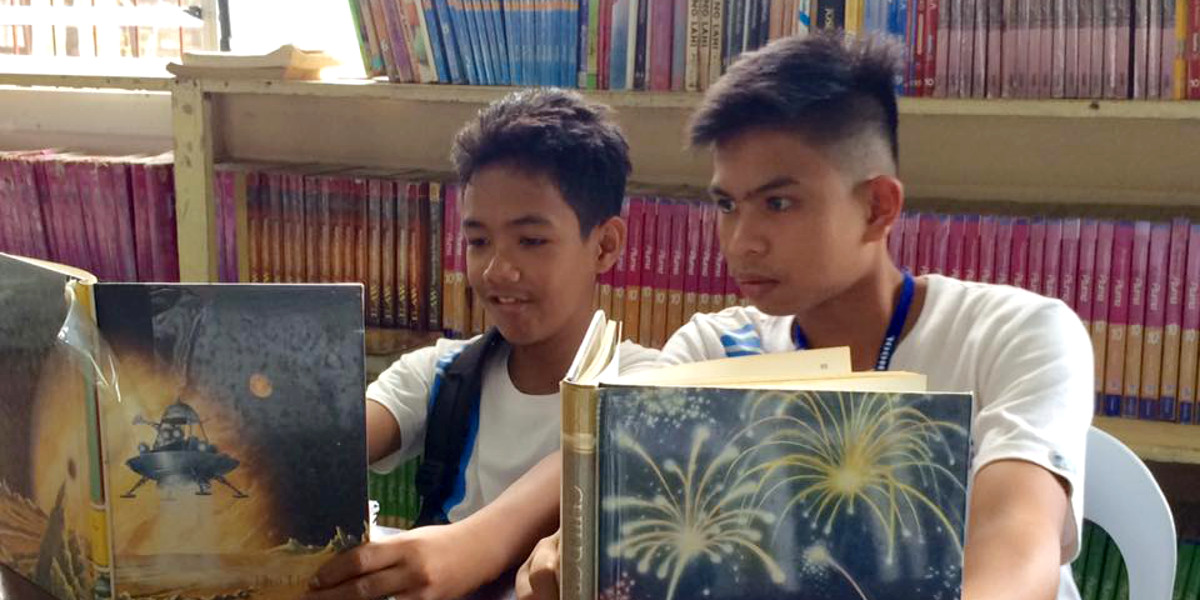Reading opens a window to the world. But for children in many rural areas, access to books can be challenging. Often there are no bookstores, and not much disposable income for luxuries like books. Having a good school library is a blessing for many students in small towns–here they can read books that will expand not only their knowledge but also their worldview.
A first in a series about libraries in Jesuit mission schools around the Asia Pacific conference, we take a look at Saint Isidore High School in Bukidnon, Philippines. Their story begins with the school director’s goal of encouraging a culture of reading, and how a successful book drive brought more titles to their library shelves.
Tolkien, Rowling and Stan Lee: How a Jesuit mission school in Bukidnon is opening rural children to the wonders of reading
Saint Isidore High School of Zamboangita in Bukidnon, Philippines was established 28 years ago by the late Italian Jesuit Fr Ferrucio Leoni SJ, who had set up Nuestra Señora de Guadalupe High School in Cabanglasan, a neighbouring town, in the early 1980s. Today, Saint Isidore has 500 students from Grades 7 to 12. Around 30 per cent come from indigenous groups from all over the Upper Pulangi region. It is the only Catholic school in the area.
“We call it a mission school… You can also call it a parochial school because it is diocesan-owned. The chairman of the board is Bp Jose Cabantan DD (Bishop of Malaybalay), but the Jesuits have been running it from the beginning,” says Fr Harvey Mateo SJ of the Philippine Jesuit Province.
Fr Mateo has been the school’s director since 2017. Newly ordained and sent to far-flung Zamboangita to run a mission/parochial/government-subsidised private school, he remembers: “I was so overwhelmed. Then Fr Ari (Dy SJ, President of Xavier School) told me: ‘Focus on one thing and do that for the year’. I said, okay we will do reading. Everything starts with reading.”
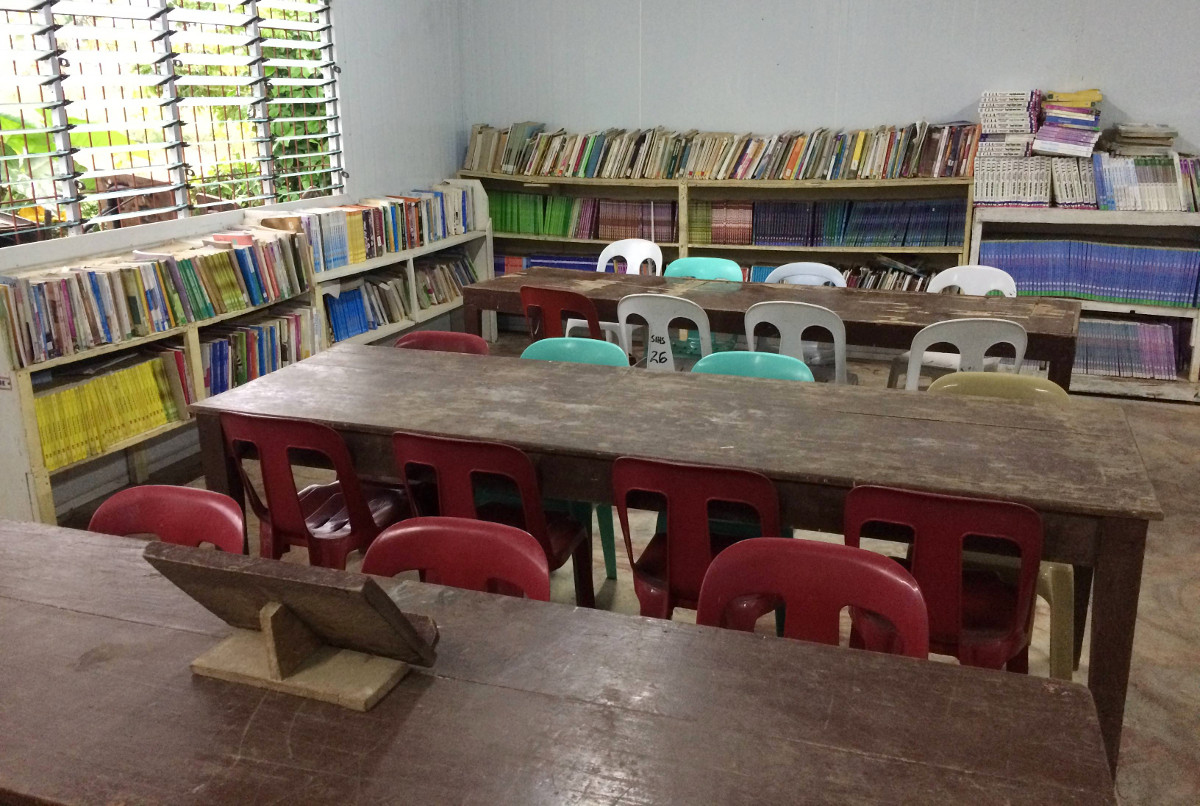
Two years ago, the school had two libraries but both in sorry states: they were “more like warehouses for textbooks.” Fr Mateo remembers: “They were only open a few times a day because there was no library staff. It was a teacher in charge, so when the teacher was free, he would open it.” He recalls seeing other school libraries in the area, which were not so different from theirs in Zamboangita, consisting mostly of textbooks and not a lot of students. “I’m not surprised because books are expensive, and there are no librarians to maintain them, and there really is no culture of reading”, he says.
Fr Mateo remembers the feedback from one of the honour students who had just started senior high school but was thinking of leaving. “One of the complaints he had was that our library didn’t even have a decent dictionary. So I said to him: ‘Can you wait and give us a chance to do something about it?’” says Fr Mateo. “At the Jesuit Retreat House (in Malaybalay), I was looking for dictionaries”, he remembers with a laugh.
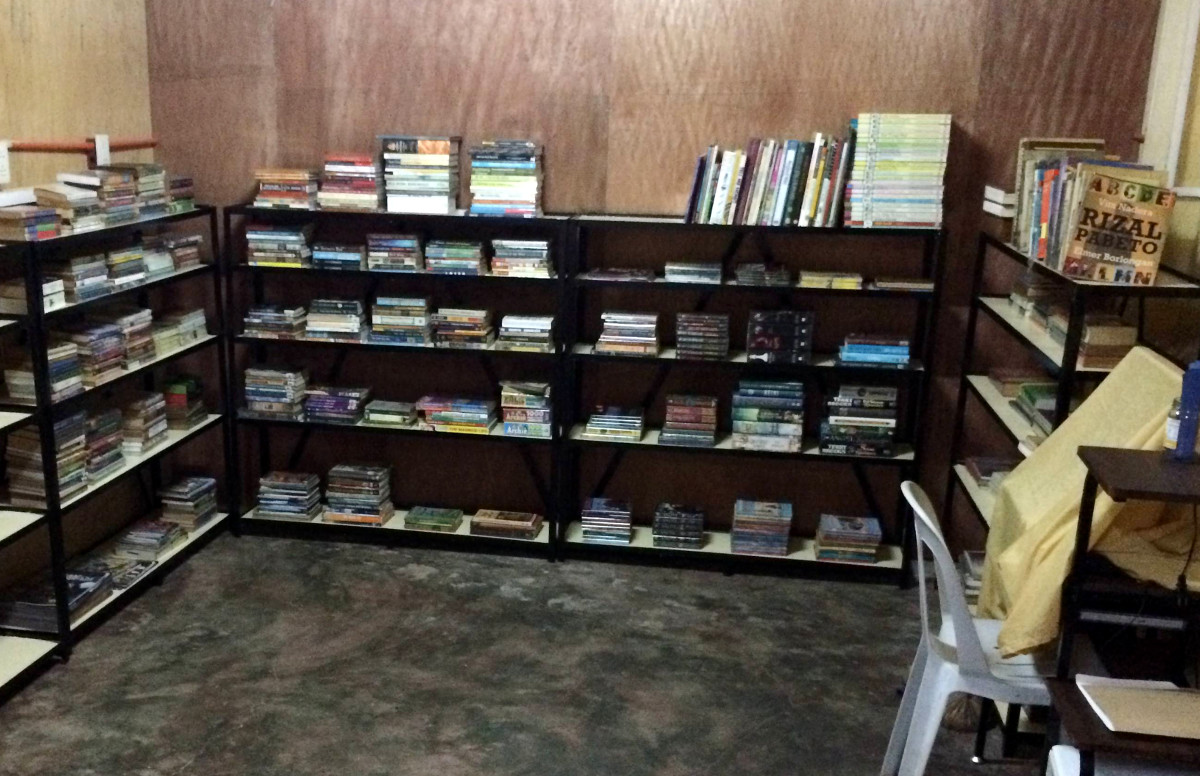
The rehabilitation of Saint Isidore’s library began with weeding out the old books. “And then I just started by looking for book donations”, says Fr Mateo. The first major book drive was through Rica Bolipata-Santos, Director of Ateneo de Manila University’s Communications and Public Relations Office. “That was very successful because she had a lot of contacts. If I remember correctly there was this one shipment of 20-plus boxes which I had to sort”, he says. Another donor sent specially selected young adult titles.
“That started it. We had special shelves made, which took forever”, says Fr Mateo. Inundated with donations (which also found their way to three other Jesuit mission schools in Bukidnon), there was a lot of sorting to do. “The novices helped, and the Jesuit Volunteer had just arrived, so we had help. When I needed someone to encode the titles, stamp the books and cover them, I got the graduates who needed summer jobs. I told them: ‘Come over, log your hours and I will pay you for your work.’ So they were just covering and stamping books.”
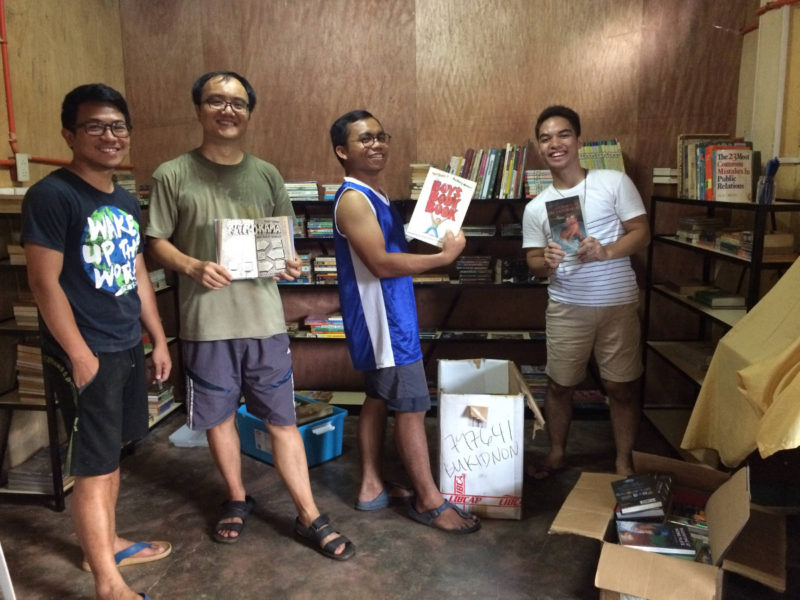
“Initially I was very protective of the books because we didn’t have anybody there”, Fr Mateo says. At first, a couple of teachers were assigned to the library, but the school board crunched the numbers and decided to hire a full-time librarian. They found a lady applying for a teaching position, but with a long background in administration. She became the school librarian. “Kids can borrow books. We have a system, but it’s not perfect yet”, he admits. “Right now, I can confidently say that we have the best book collection. I can’t say it’s organised as well as a library, but the book collection is very good.”
Fr Mateo also realised: “Another thing is how to teach the students how to use a library. And how to care for books.” The students already have library cards, now book cards are in the works. “We’ve lost two books, but Von Totanes (Director of Ateneo de Manila’s Rizal Library) said that’s a good indication.”
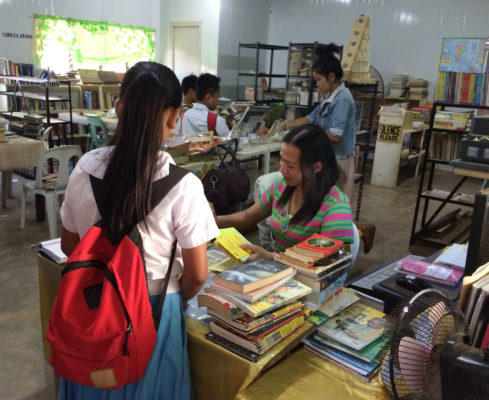
Now the library of Saint Isidore High School is no longer a dusty warehouse. Fr Mateo says: “I see that people go to the library and borrow books.” Indeed reading is becoming a favourite activity there. Fr Mateo noticed a dorm student who was hooked on playing games on his mobile phone. “I tried a strategy. I said, ‘I will give you a comic book, read it and once you’re done, I will give you another one.’ We had an exchange; it went on for a while: graphic novels, even The Smurfs. I introduced him to Asterix”, says Fr Mateo. “Rica told me: ‘Just fill [the library] up and you will never know who will pick up what.’” Another student was looking for Tolkien’s classic fantasy The Return of the King. The student would later look for The Silmarillion. “After he was finished with The Return of the King, our cook asked for it!” he says. “When I got these books, I didn’t know if anyone would touch them.”
Fr Mateo keeps the students updated on upcoming titles. “On Facebook we have a page where I put out new books that are coming soon. The one that got the biggest reaction was a donated complete set of Harry Potter. They are so excited. There are certain books that amaze them. Reading opens up their world”, he shares.
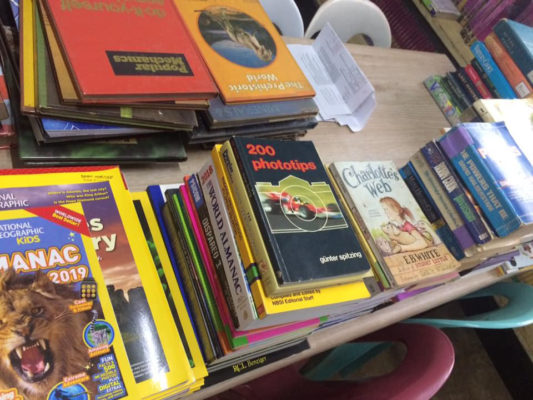
“The books keep coming. We have a big stack waiting to be processed”, he says. There is a whole box of vintage X-Men comics and a set of original hardcover Hardy Boys. “The librarian said to me: ‘We’re running out of plastic cover!’ It’s a good problem to have”, Fr Mateo acknowledges. And now “there are enough kids reading to start a book club”, says Fr Mateo. “But more immediate is that we have to learn how to use the library. But before we can do that, it has to be organised first. Baby steps.”
Photos courtesy of Fr Harvey Mateo SJ
Related story:
Seeking the world inside a library: Enabling a culture of reading


